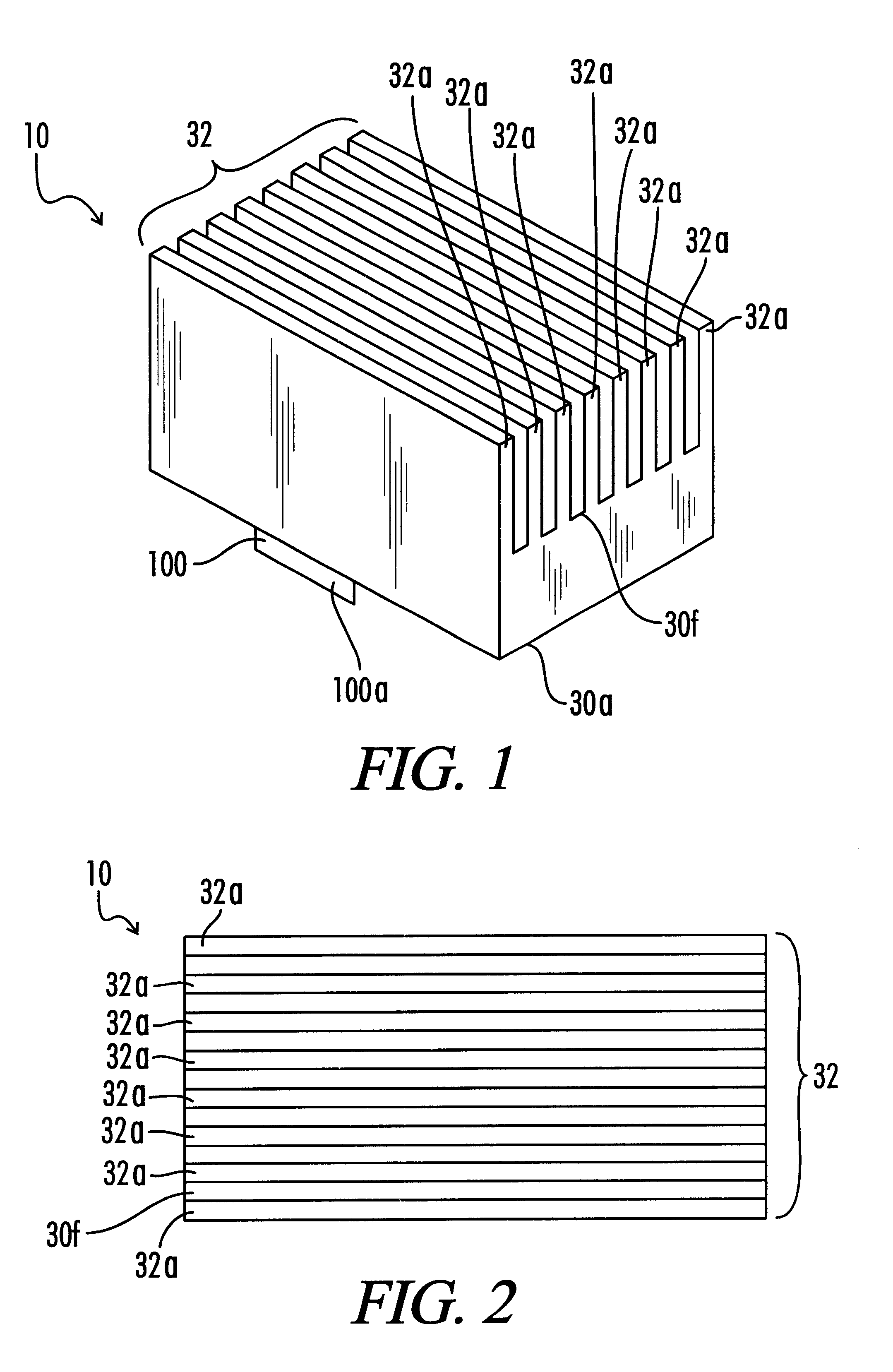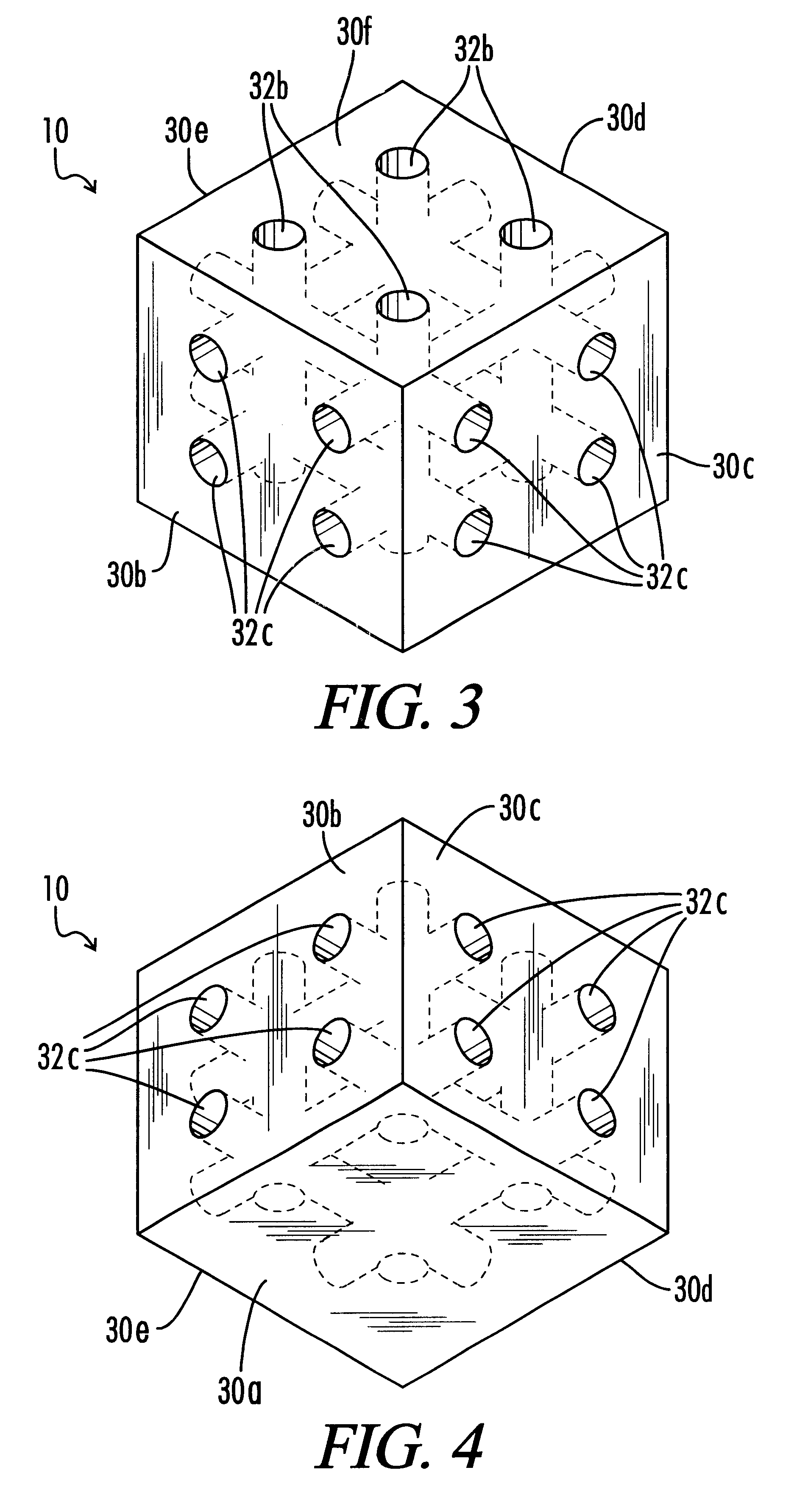Graphite-based heat sink
a heat sink and graphite technology, applied in the direction of surface layering apparatus, manufacturing tools, lighting and heating apparatus, etc., can solve the problems of system failure, affecting the performance of the individual, and affecting the overall system performance and reliability,
- Summary
- Abstract
- Description
- Claims
- Application Information
AI Technical Summary
Benefits of technology
Problems solved by technology
Method used
Image
Examples
Embodiment Construction
Heat sinks in accordance with the present invention were prepared by forming flexible graphite sheet by intercalating natural graphite flake, exfoliating the natural graphite flake by exposing the flake to a flame to form exfoliated graphite particles, compressing the exfoliated graphite particles to a sheet having a density of about 0.104 g / cc and a thickness of 7.0 mm, and impregnating the sheet with an epoxy resin system comprising a liquid diglycidyl ether of bisphenol A (DGEBA) resin, a solid DGEBA resin, a latent powdered amine-containing curative and a substituted urea accelerator. The resulting sheet was then comminuted and compressed into a block or bar by either die pressing to a pressure of 10,000 psi or isomolding to a pressure of 26,000 psi, as indicated. The article was then cured to form an article having about 24-25% resin and the remainder graphite. Several characteristics of the resulting article were measured and the results reproduced below in the Table.
The first...
PUM
| Property | Measurement | Unit |
|---|---|---|
| thickness | aaaaa | aaaaa |
| thickness | aaaaa | aaaaa |
| density | aaaaa | aaaaa |
Abstract
Description
Claims
Application Information
 Login to View More
Login to View More - R&D
- Intellectual Property
- Life Sciences
- Materials
- Tech Scout
- Unparalleled Data Quality
- Higher Quality Content
- 60% Fewer Hallucinations
Browse by: Latest US Patents, China's latest patents, Technical Efficacy Thesaurus, Application Domain, Technology Topic, Popular Technical Reports.
© 2025 PatSnap. All rights reserved.Legal|Privacy policy|Modern Slavery Act Transparency Statement|Sitemap|About US| Contact US: help@patsnap.com



